
Bye bye Winter. See you when I see you… Ahh-choo!
Introduction:
Sabaidee everyone and happy Spring! Spring is one of my favourite seasons, although there’s only 4 to choose from and with respect to winter, does he even stand a chance? Spring is full of hope and promises, and usually delivers even if it’s sometimes later down the track. Despite the still chilly nights and early mornings, pretty flower blossoms and the sweet songs of birds are already starting to appear, albeit sparingly. Today, I thought I’ll pluck 5 birds in one sitting (figuratively speaking) and share with you an update of all the fabulous pickles and fermented foods that I’ve made over the last month, including the padaek which was made 8 months ago today. They’re all at their own different stages of development and I must admit that I’ve been kept entertained by regularly inspecting and observing their progress, and patiently waiting for the day when they’re finally ready to be consumed. Pickling and fermenting is really a lot of fun folks, even if it might make you feel and look like a grandma or “mair tao”. It’s a rewarding process and I hope that you’ll give it a try one of these days if you haven’t already done so. I love you mair taos! 1
~
Padaek:
This was made on 05/01/14. Today, it is 243 days old. 2 I’m a little dispirited by how much (or more precisely, how little) the padaek has changed/fermented over the last few months.
Another whole month has passed and the padaek still shows no visual progress/change, as you can see in the photos below (#09 indicating September). Alas.
To be fair though, we have just been through winter and some of you might agree that our seasons are a little behind the charts atm. Even though it’s conventionally Spring on the calender, 3 winter’s essence is still evidently with us. This is perhaps why our padaek is currently still sleeping/hibernating, and so we’ll be kind/forgiving to it once more.
To help wake it up from its stupor, I decided to once again open up the jar today and give the interior a good/thorough stir/mix-through with a pair of chopsticks. I turned/flipped the fish/ingredients from the bottom to the top.
Meanwhile, I’m in the process of looking for more fish to make my second round of padaek. Stay tuned for Padaek #2. Watch out Chanel #5!
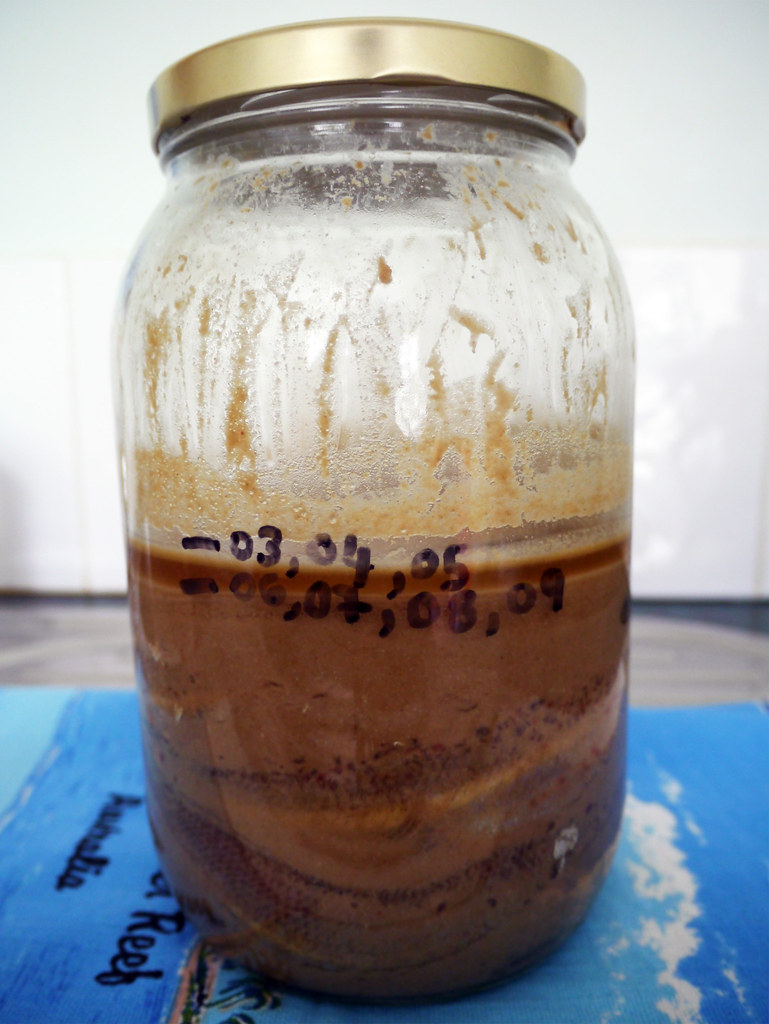
Padaek #1
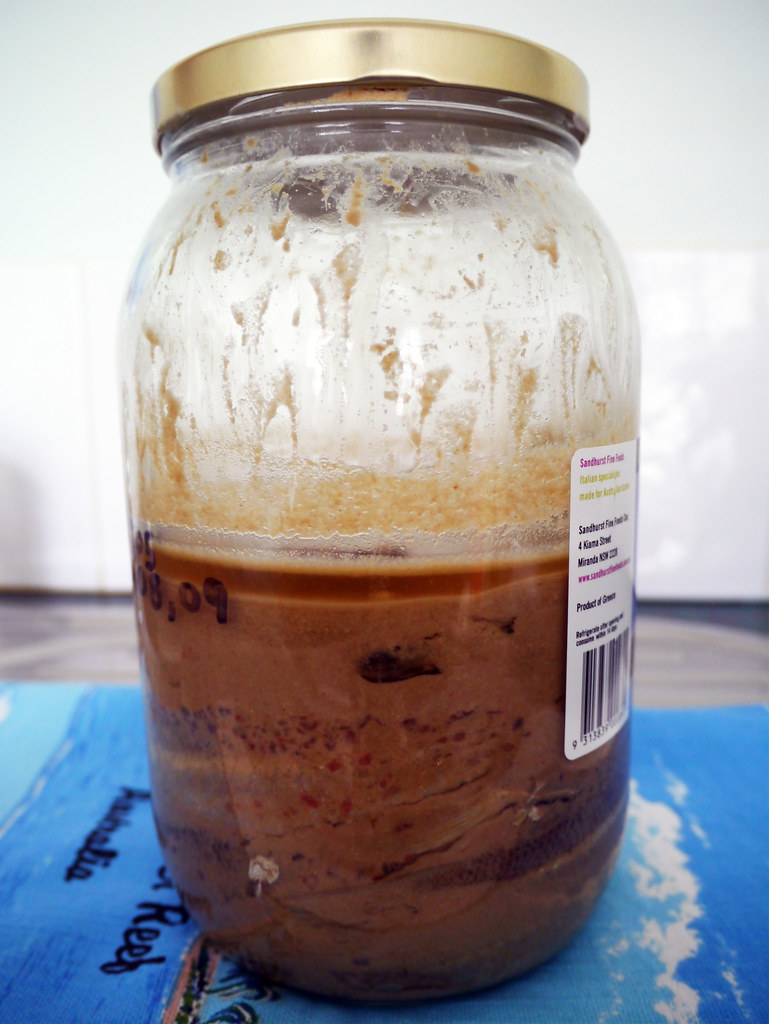
Padaek #2
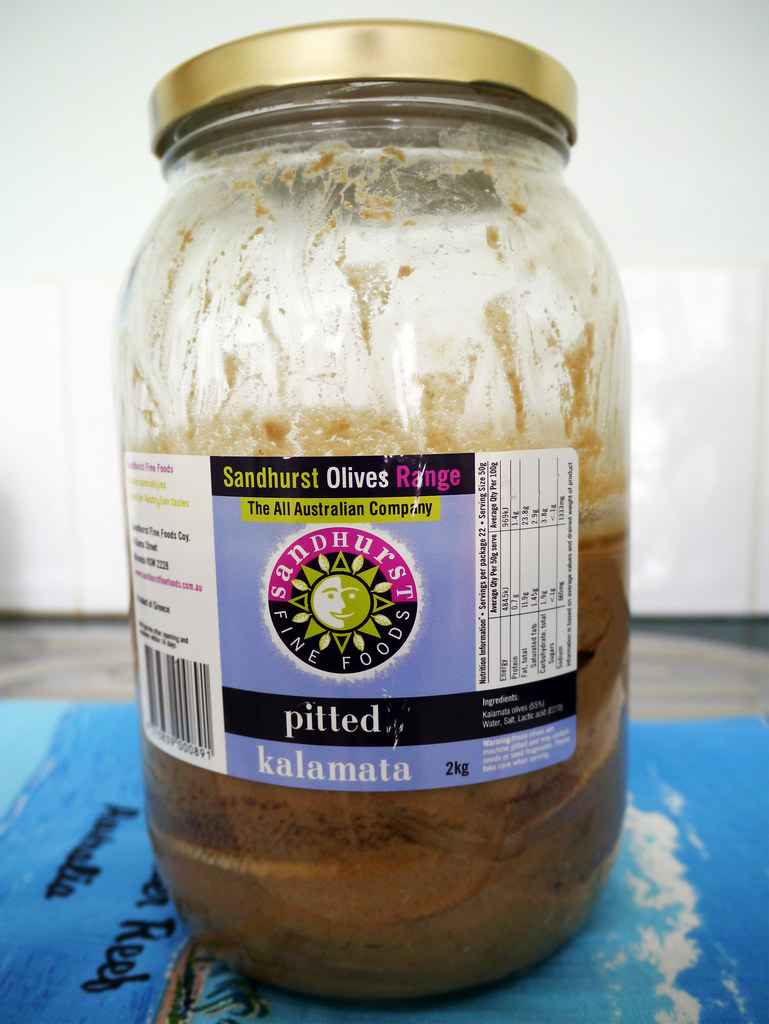
Padaek #3
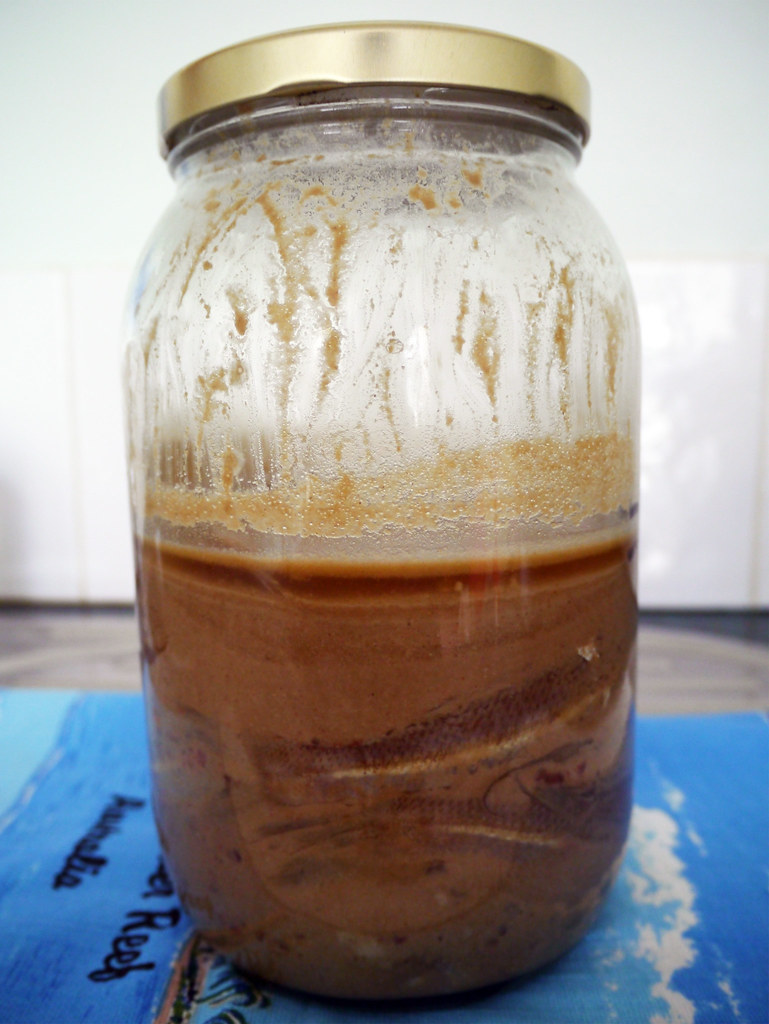
Padaek #4
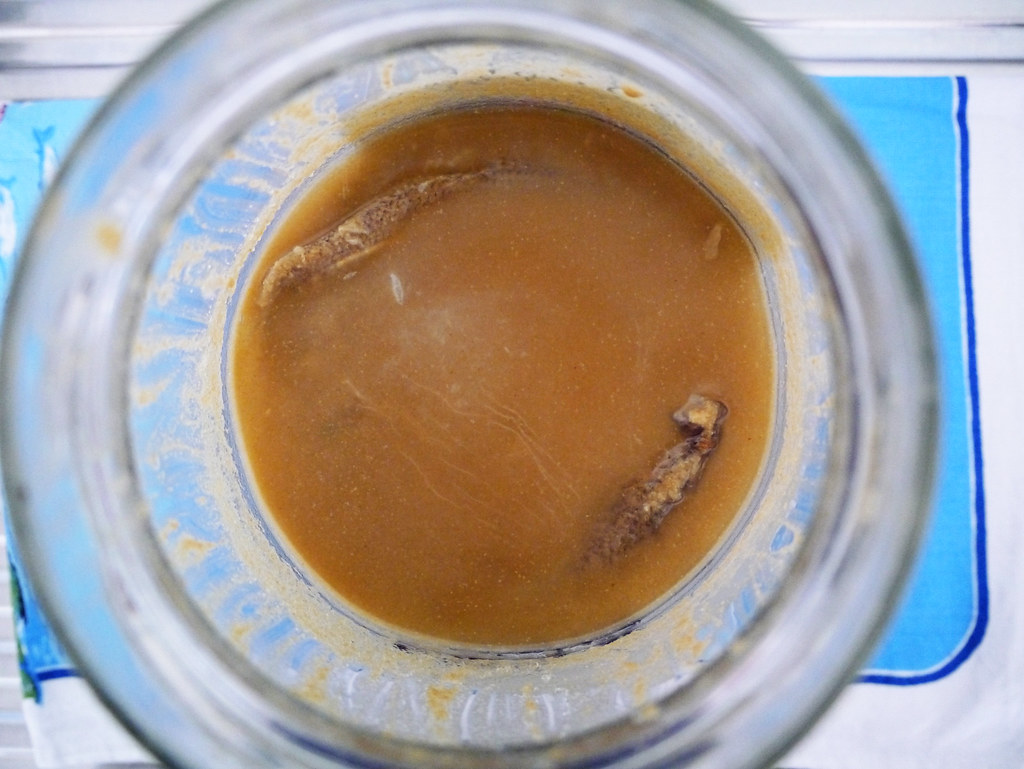
Padaek #5
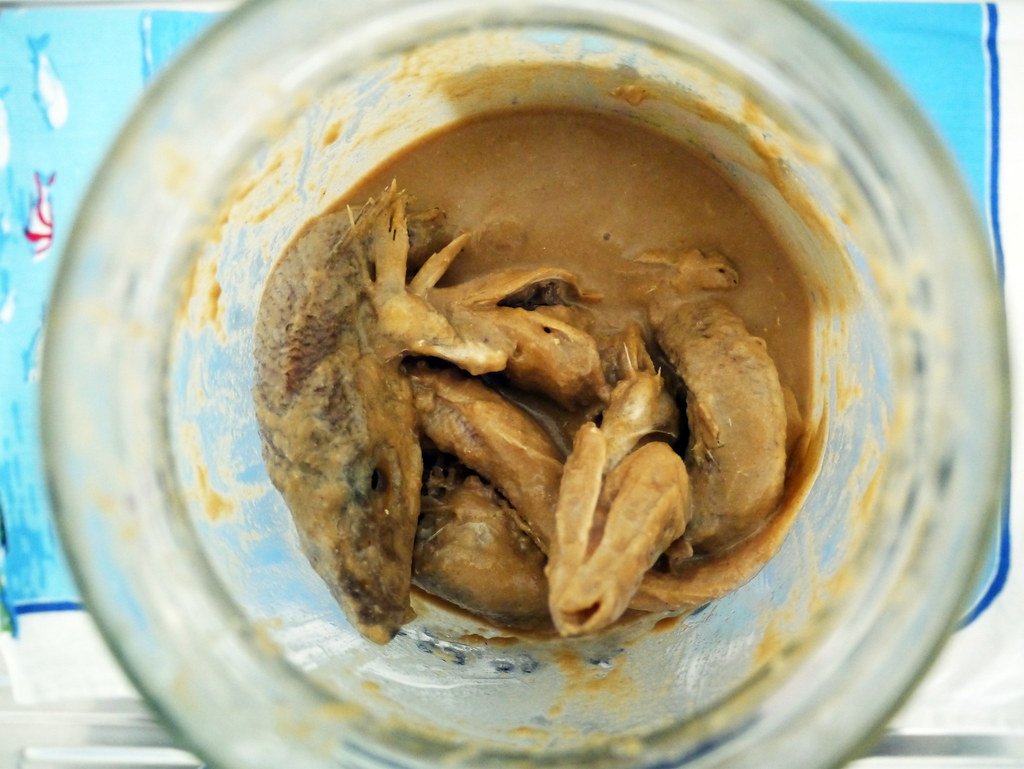
Padaek #6
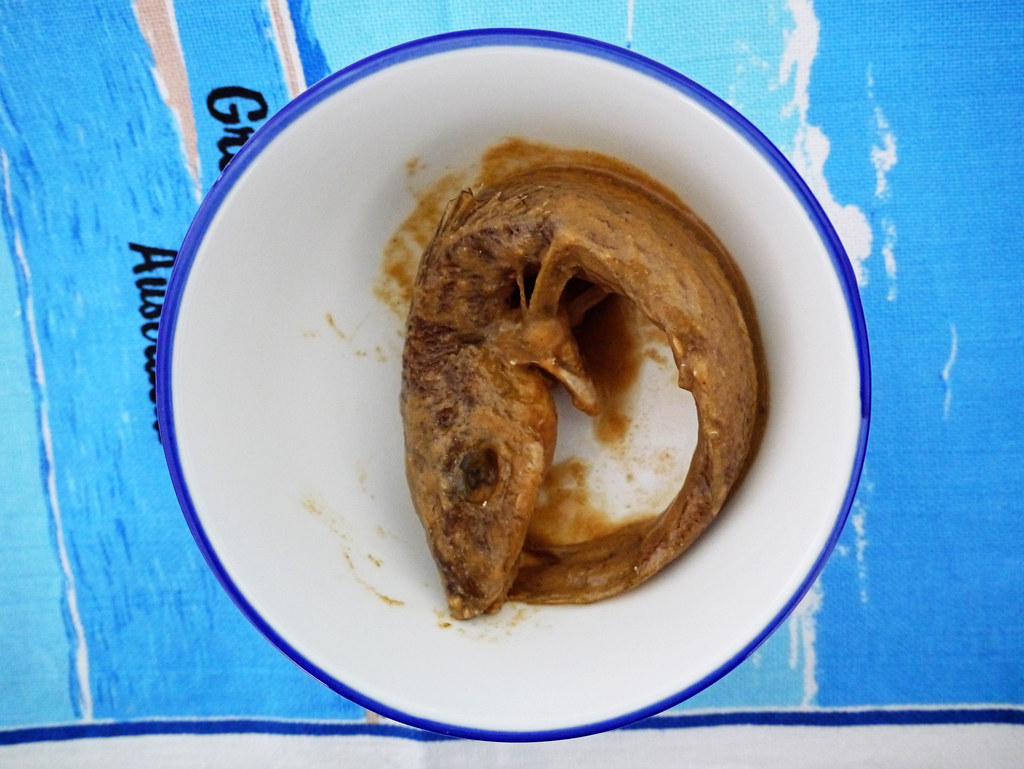
Padaek #7
Note: I was looking at this photo in detail and wondered what the tiny white dots/spots were near the fish’s eye, fin and tail? I didn’t notice them when taking the photos and only noticed them afterwards. In hindsight, I did stir the jar and moved the fish around with chopsticks (which was not an easy task btw because the fish had hardened and stuck to the bottom of the jar), at the same time jabbed the fish in the body cavity, eye sockets, etc. My guess is that the tiny white dots/spots are possibly tiny white bits of fish (skin, fat, lining of stomach, bone, scale, etc), or bits of salt or rice bran in the padaek sauce. To be honest though, I don’t really know what they are but I don’t think they’re anything harmful.
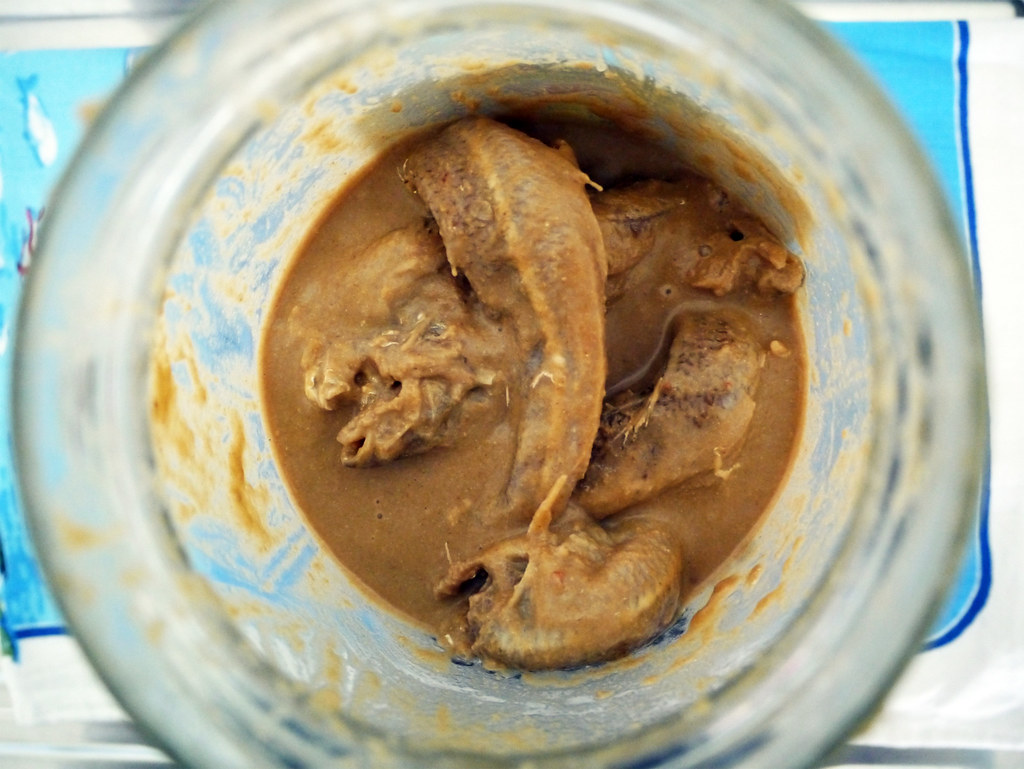
Padaek #8
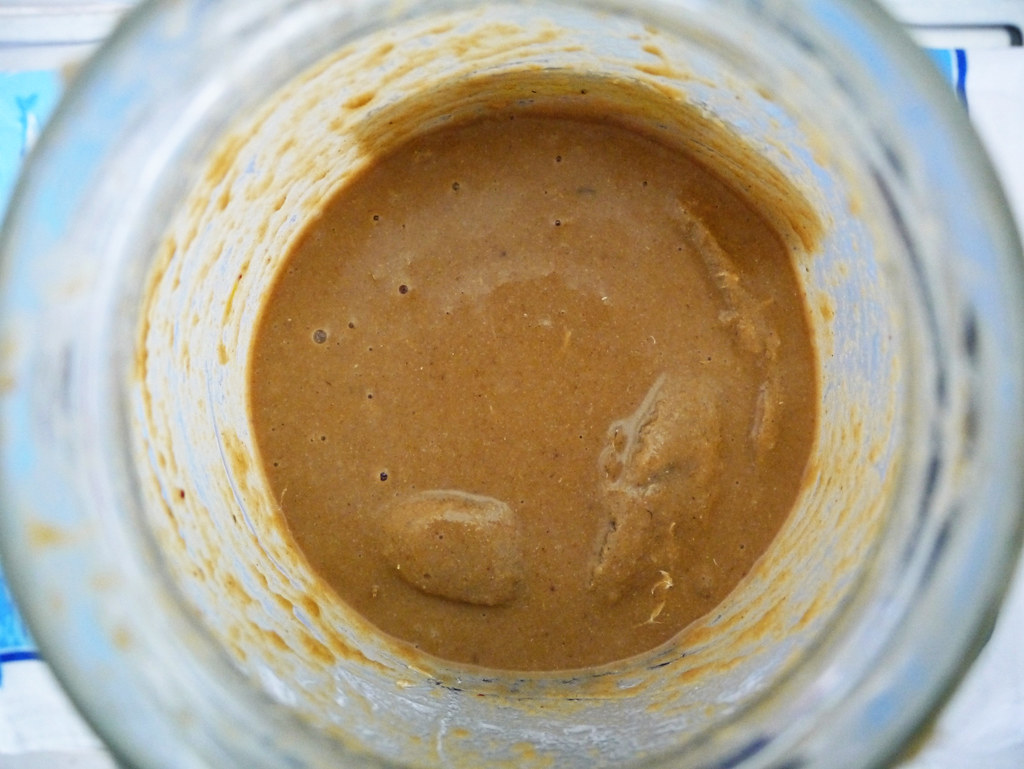
Padaek #9
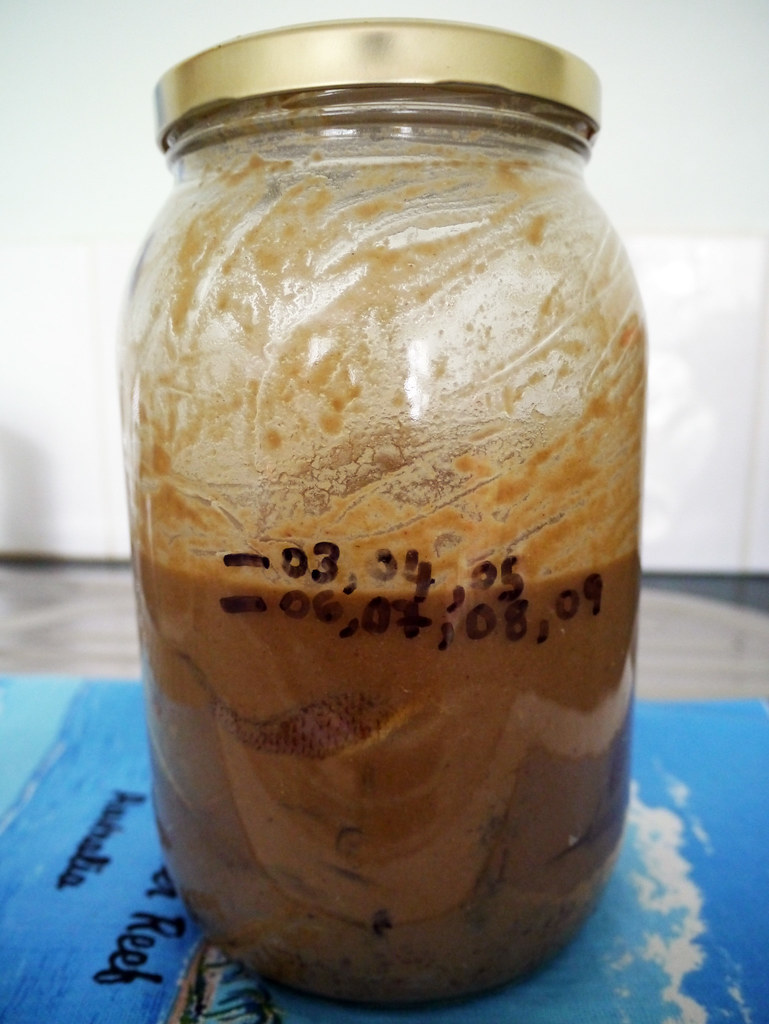
Padaek #10
KISS pickled onions:
This was made on 09/08/14. Today, it is 27 days old. I can’t believe that it’s nearly a whole month since I made these ‘refined’ KISS pickled onions, and today I decided to give them a taste test. Because the recipe for these was based on a tried and successful recipe – as expected, these pint-sized KISS pickled delights turned out and tasted great!
The onions used in this recipe were extraordinarily small pickling onions and as a result, they didn’t take much time to pickle/soak up the juicy/flavoursome vinegar based mixture. The crunchy moreish morsels tasted sweet, tangy, sharp, juicy, malt-vinegary and slightly spicy. Yum!!
I think that they’re pretty much ready to eat today, but I’ll wait until the 9th and let the rest of them brew some more just to make sure. That’s only a few more days away anyway.
I’m looking forward to enjoying them sliced up with a selection of cold meats, cheeses, crackers, and other nibbles, etc. for a good arvo lunch. Mmmm.

KISS pickled onions #1
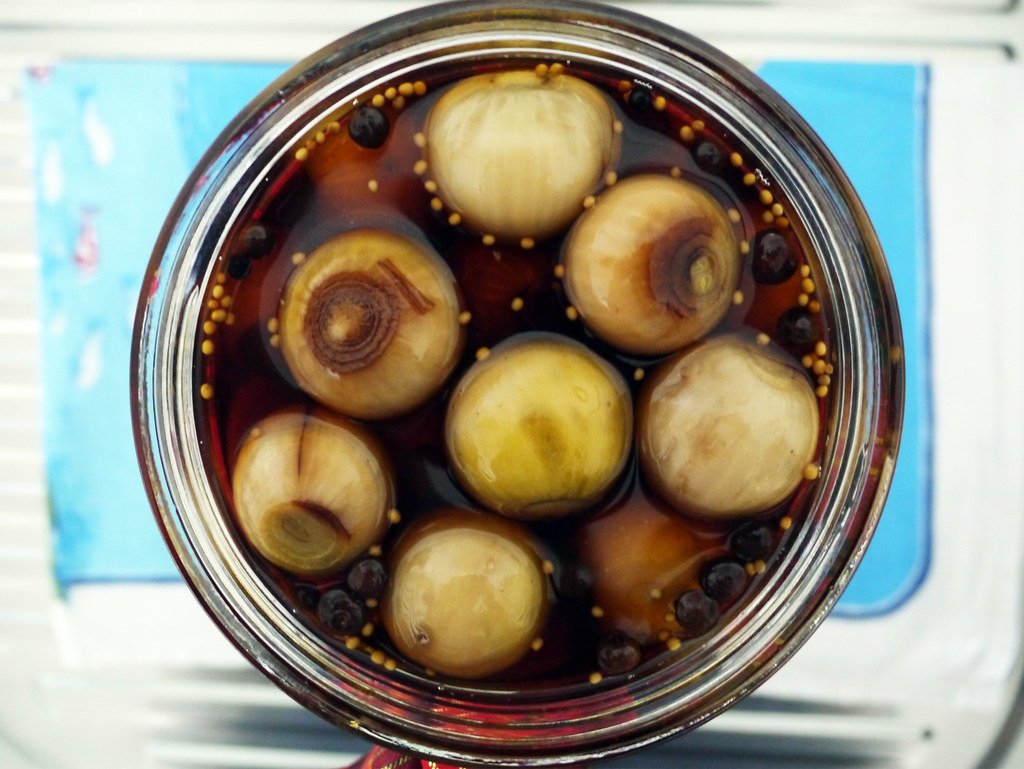
KISS pickled onions #2
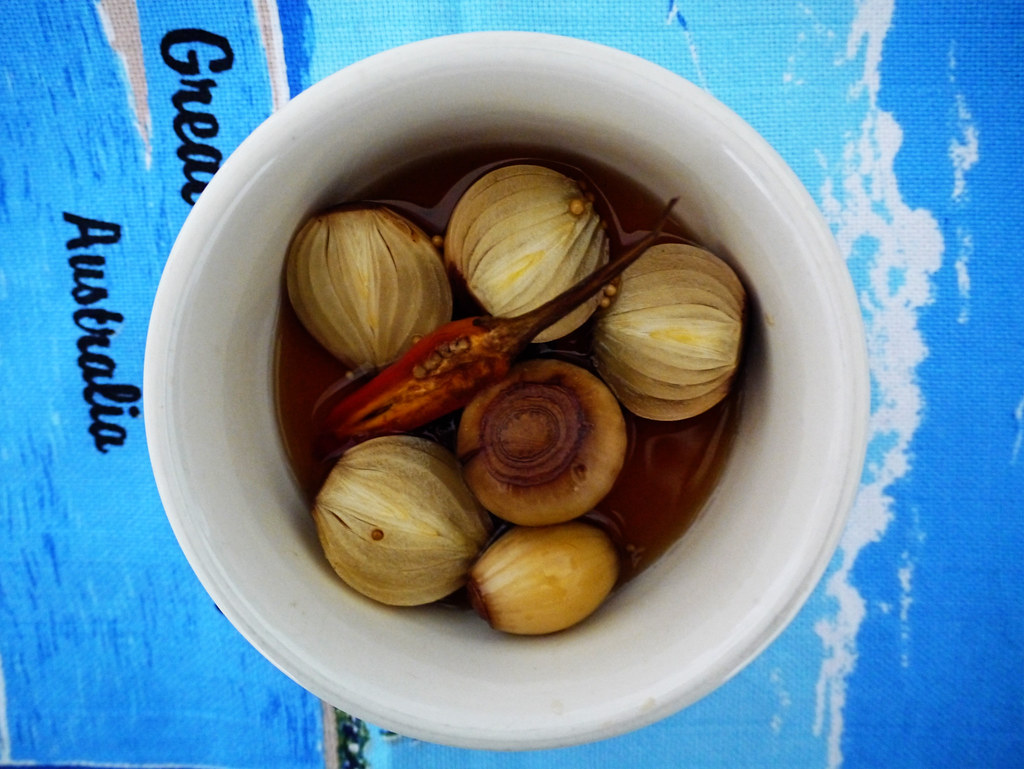
KISS pickled onions #3
Lacto-fermented pickled onions:
This was made on 22/08/14. Today, it is 14 days old. As you can see, these are markedly whiter compared to the KISS pickled onions above, partly because malt vinegar was not used and they haven’t brewed/pickled for long enough.
I do like the whiteness/lightness of the onions but I also like the more familiar dark colour of the ones pickled in malt vinegar. At the end of the day though, taste is the most important.
As expected, being a mere two weeks old, these aren’t quite yet ready. When I tasted them today, they’re palatable but they could definitely do with some more pickling time.
They tasted distinctively like brined ‘raw’ onions – sharp, ‘onion’ hot (reminiscent of wasabi) but nonetheless still edible, sweet, slightly salty and crunchy. The salt flavour was surprisingly pleasant (and not overbearing), possibly tempered by the sugar in the recipe. The flavours of the aromatics was mild/subtle.
Hopefully (and I have a good feeling about it), in a month’s time when I taste test them again, they will have fermented more and soaked up more of the brine solution (including the aromatics) and intensified in flavour and character.
I’m very happy with how these are progressing and hope that the end result will be as tasty if not better than the KISS pickled onions. Hopefully, these probiotic-rich, lacto-fermented pickled onions will become our new choice of pickled onions.
Note: Since bottling the onions, I did not open the jar once to let it burp (as advised) until today. Fortunately, when I did open the jar today there was no dangerous bubbling or eruption. Phew!
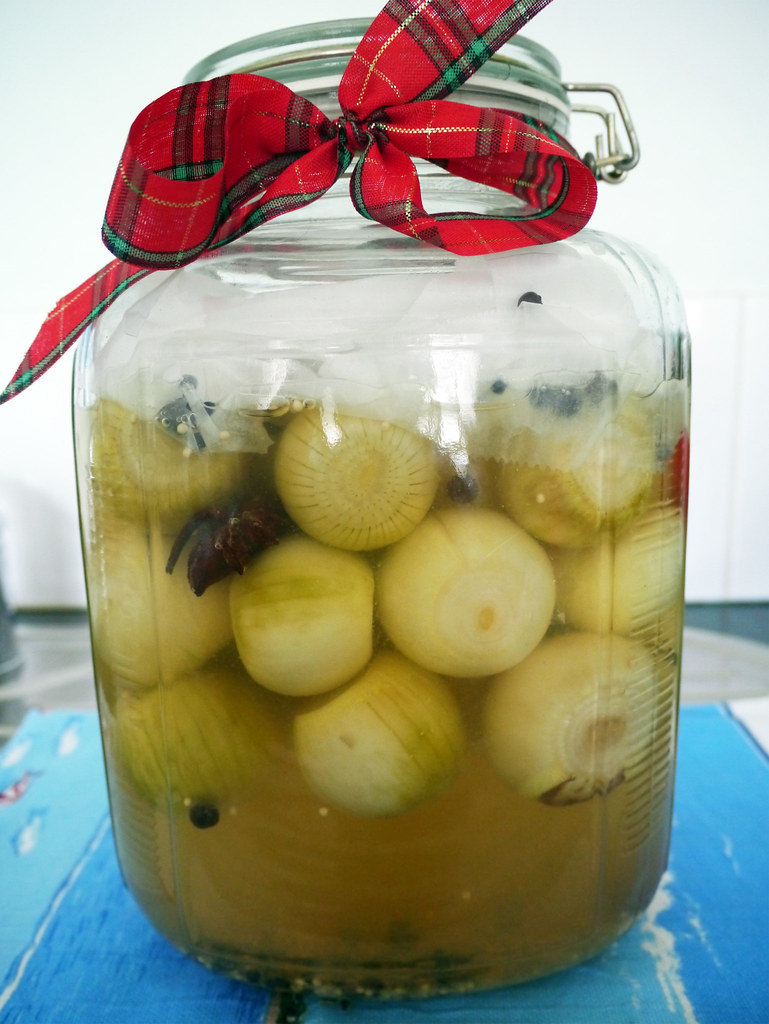
Lacto-fermented pickled onions #1

Lacto-fermented pickled onions #2
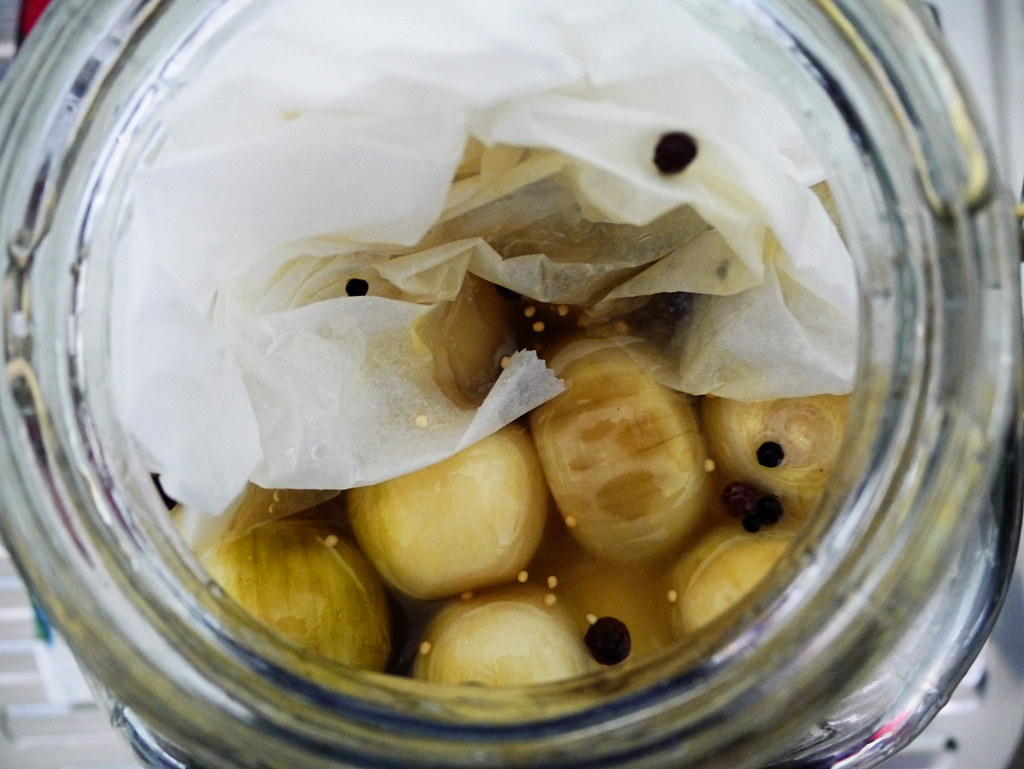
Lacto-fermented pickled onions #3

Lacto-fermented pickled onions #4
Lacto-fermented pickled beetroot/beetroot kvass:
This was made on 26/08/14. Today, it is 10 days old. Salixisme advised to taste test the kvass after a couple of days. I opened the jar to let it burp on the weekend, at the same time taste-testing both the kvass and pickled beetroot. At the time, I thought it tasted delicious!
Today, I tasted them again and it appears that the flavour of the kvass has only gotten better. It tasted more ‘brewed’, smooth, naturally ‘beetroot sweet’ and slightly yet perfectly salty (according to my tastebuds at least). 4 The garlic, ginger and star anise flavours are mild however, but overall the kvass tasted very appetizing/palatable indeed. I’m pleasantly surprised and impressed by how tasty it is. The kvass liquid is a wonderfully intense deep red/purple colour similar to the beetroot brine that accompanies store bought tinned pickled beetroot.
The actual pickled beetroot pieces tasted firm/crunchy with the natural sweetness of the beetroot evident but fading, and a pleasant briny taste to them as well. We just ate them whole and I think that they’ll make a great/colourful addition to a fresh garden salad – especially, if they’re grated or chopped into thin batons. Next time, I think I’ll slice them a lot thinner (1-2 mms), using a mandolin so they will be easier/more enjoyable to eat and use in salads.
As you can see, there was unsightly bubbles/foam that formed on top of the kvass. I believe this is a natural byproduct of the fermentation process, and I simply/nonchalantly removed/scooped it out with a spoon.
I’m pretty happy with the current flavour/state of the kvass and will pour it into a storage jar so that I can keep it in the fridge for longer for later consumption. With the remaining jar of solid beetroot slices, I will add to it a second mix of the same brine solution to make a second round of kvass. I think we might have found another new favourite drink. Yum!! (seriously).
Note: I am still here typing this post several hours after consuming the beetroot kvass, pickled beetroot slices and pickled onions, so they’re all good to go (for us and as exemplified in these examples at least).
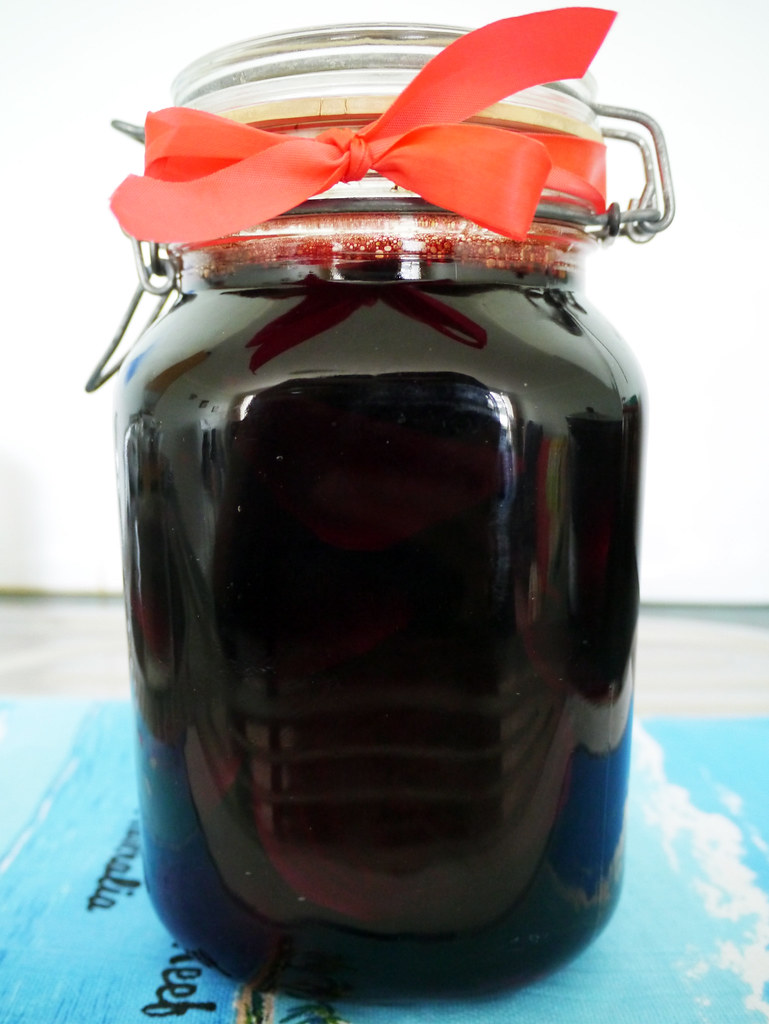
Lacto-fermented pickled beetroot/beetroot kvass #1
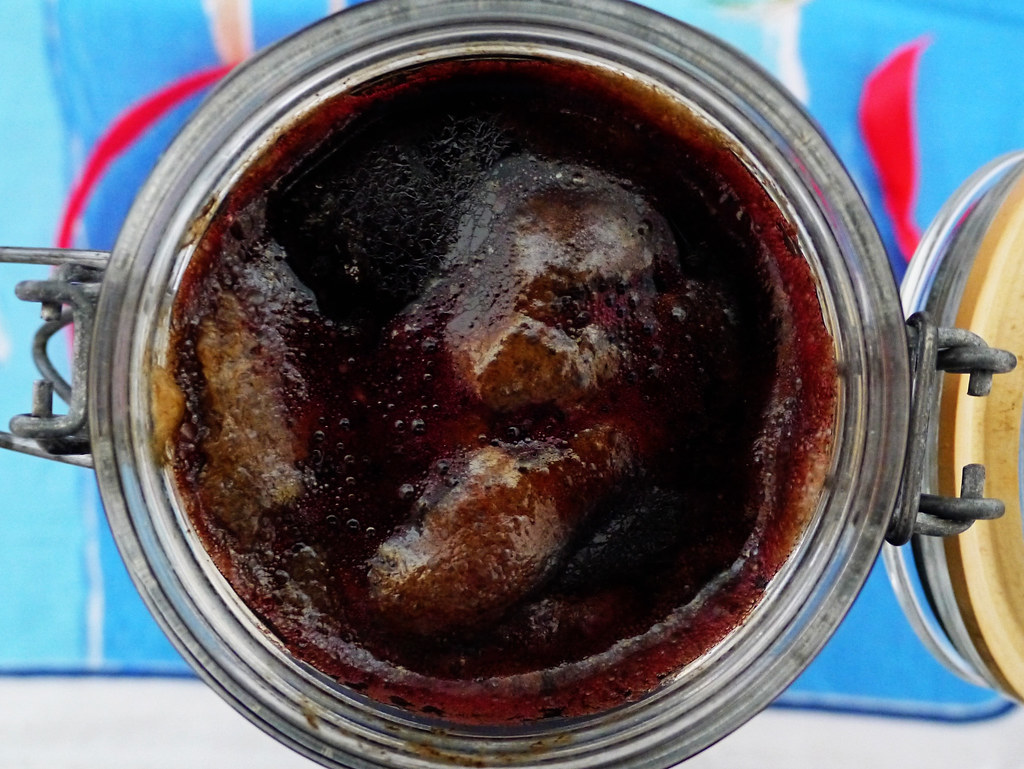
Lacto-fermented pickled beetroot/beetroot kvass #2
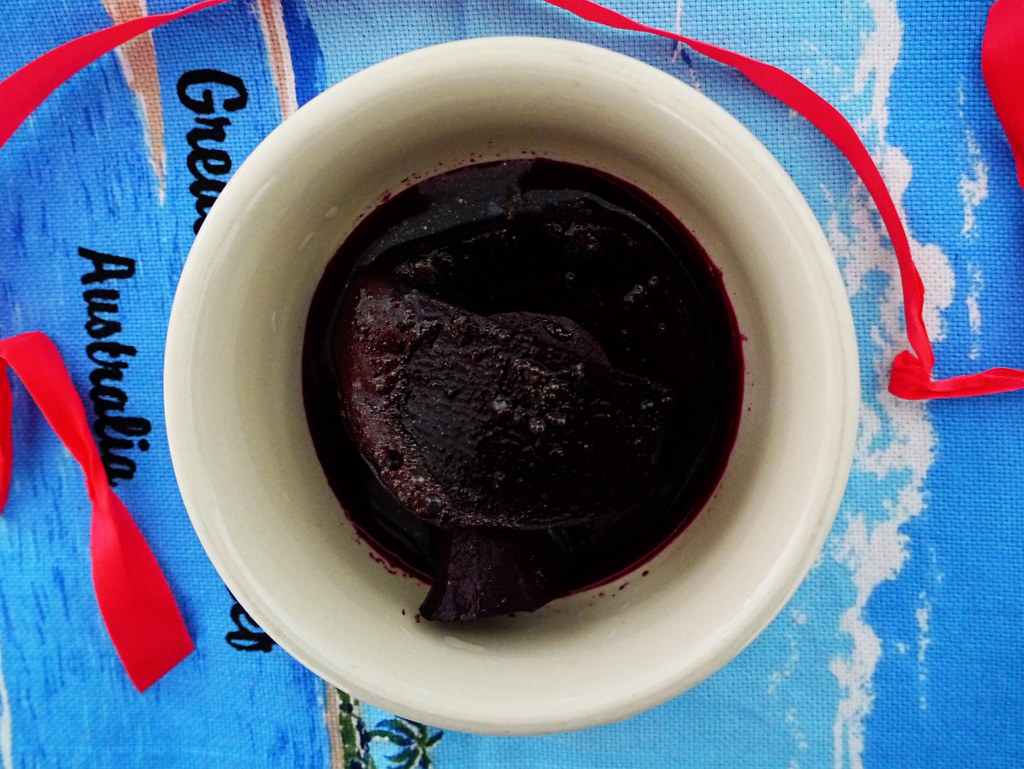
Lacto-fermented pickled beetroot/beetroot kvass #3
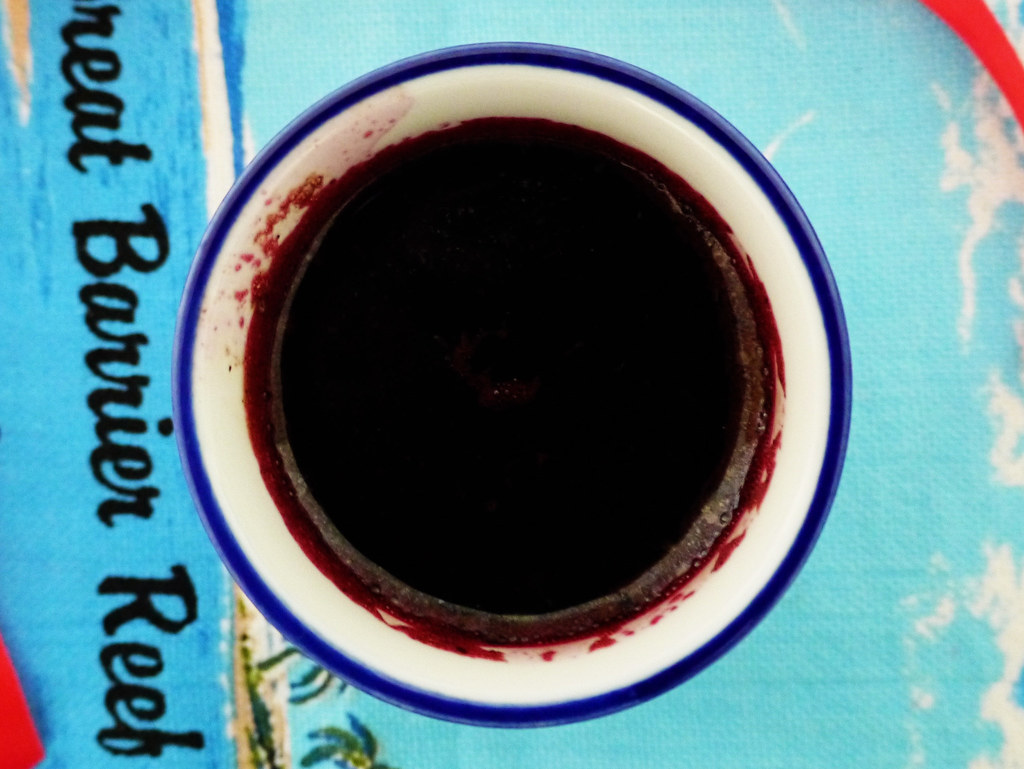
Lacto-fermented pickled beetroot/beetroot kvass #4

Lacto-fermented pickled beetroot/beetroot kvass #5
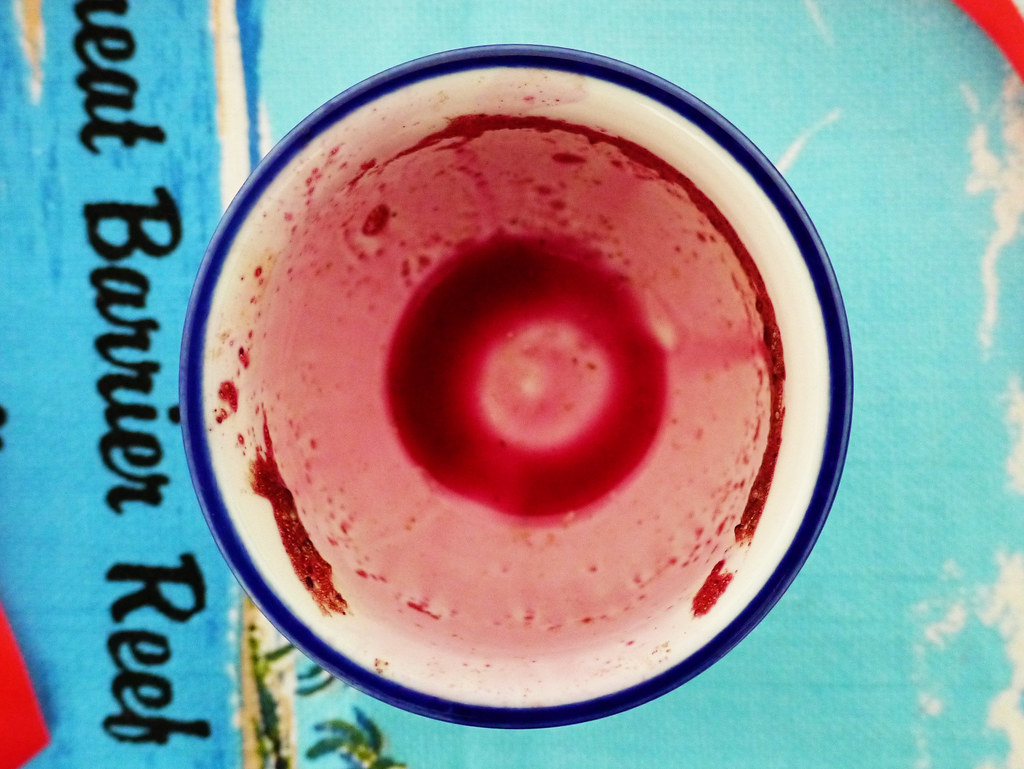
Lacto-fermented pickled beetroot/beetroot kvass #6
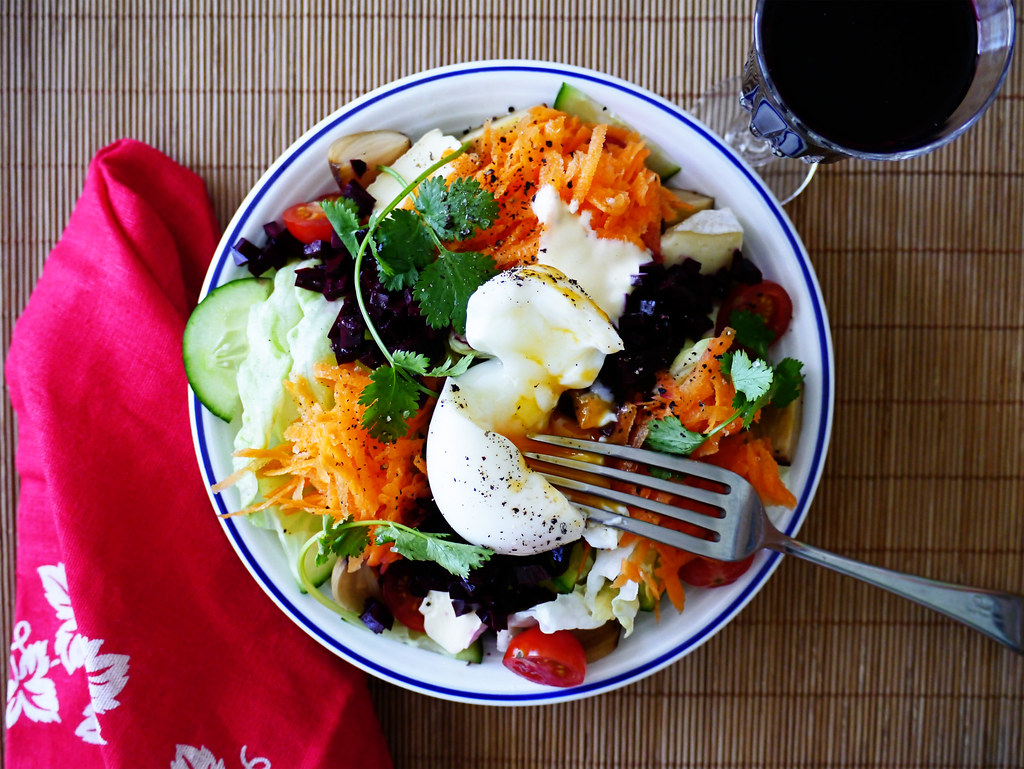
This simple salad is made of iceberg lettuce, cherry toms, sliced cucumber, coriander, brie cheese, pickled onions, soft boiled egg, mayo, grated carrot and diced homemade pickled beetroot by yours truly (oh, and a pinch of sea salt and cracked black pepper, of course). bigsmile If you like, you can also make a dressing for the salad with the beetroot kvass. The salad was served with a cold and refreshing sherry glass of beetroot kvass. Yumm!!
Kombucha SCOBY:
This was made on 30/08/14. Today, it is 6 days old. This jar of kombucha SCOBY has been the most fun to observe because as you can see, it’s been the most visually entertaining. To my lucky surprise and happiness, the birth/growth of my SCOBY baby/mother/mushroom from store-bought kombucha appears to be successful, although it’s still at the early stages of its life, so shhhhh!
The SCOBY baby has grown at a remarkable speed. To be honest, there was evidence of ‘growth’ on the surface of the kombucha/green tea mix after just one day. However, the growth was very small and I had issues with the camera lens focusing on it properly so I was unable to take a good/clear photo of it. Sorry.
It appears that the SCOBY is growing/moving fast (at a somewhat alarming/frightening speed!) to cover the whole circular surface of the kombucha mixture and it seems that at certain places, it’s already a few mms thick. Impressive! I’m so glad and proud that this ‘experiment’ is working and I’m looking forward to seeing my SCOBY grow to its full/more familiar size and shape. Go SCOBY!!
Yes, I have already thought of a name for my new SCOBY baby but will reveal it later, when I’m able to hold her.
If you’re looking for good organic green tea, be sure to try the OXFAM fair premium organic green tea. It’s very flavoursome and potent. If you think it tastes subtle/weak to start, wait until you get to the bottom of the cup/pot. It’s a decent brew! And as you can see, it’s also great to grow a SCOBY and make kombucha tea with.
Note: Since the day that I made the SCOBY, I did not move the jar once until today in fear that it might disturb the SCOBY. Also, the cloth used to cover the jar (secured with a rubber band) has not been removed from the top of the jar either.
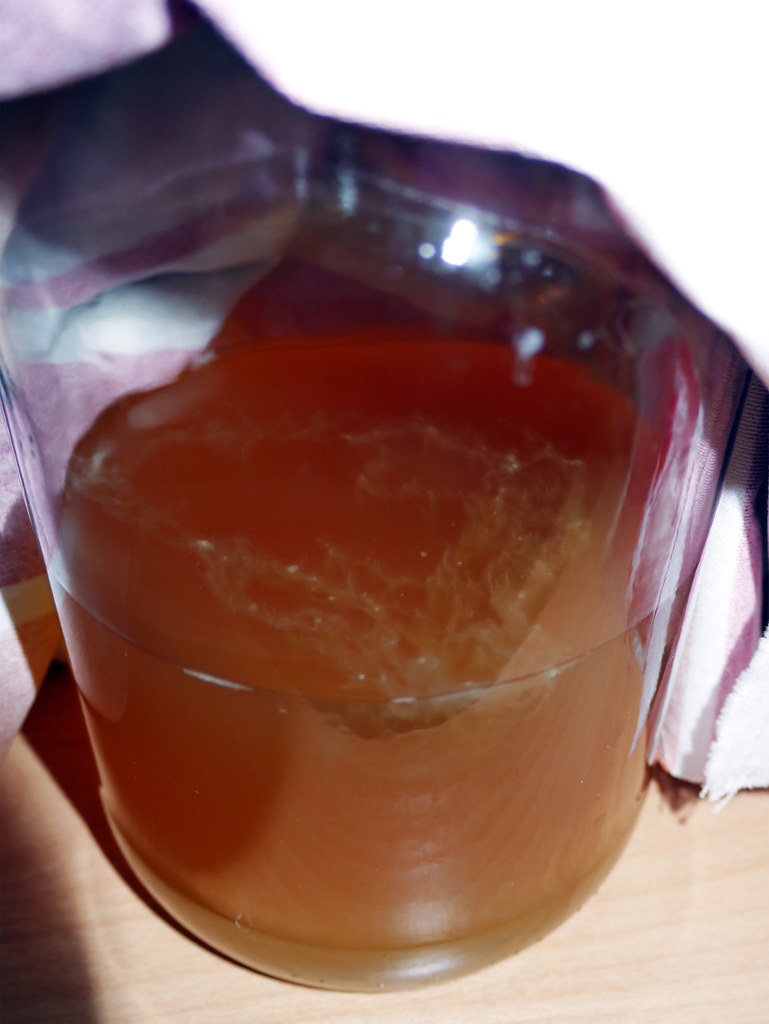
Kombucha SCOBY #1
Date Taken: 01/09/14, 8:46 PM (2 days old)
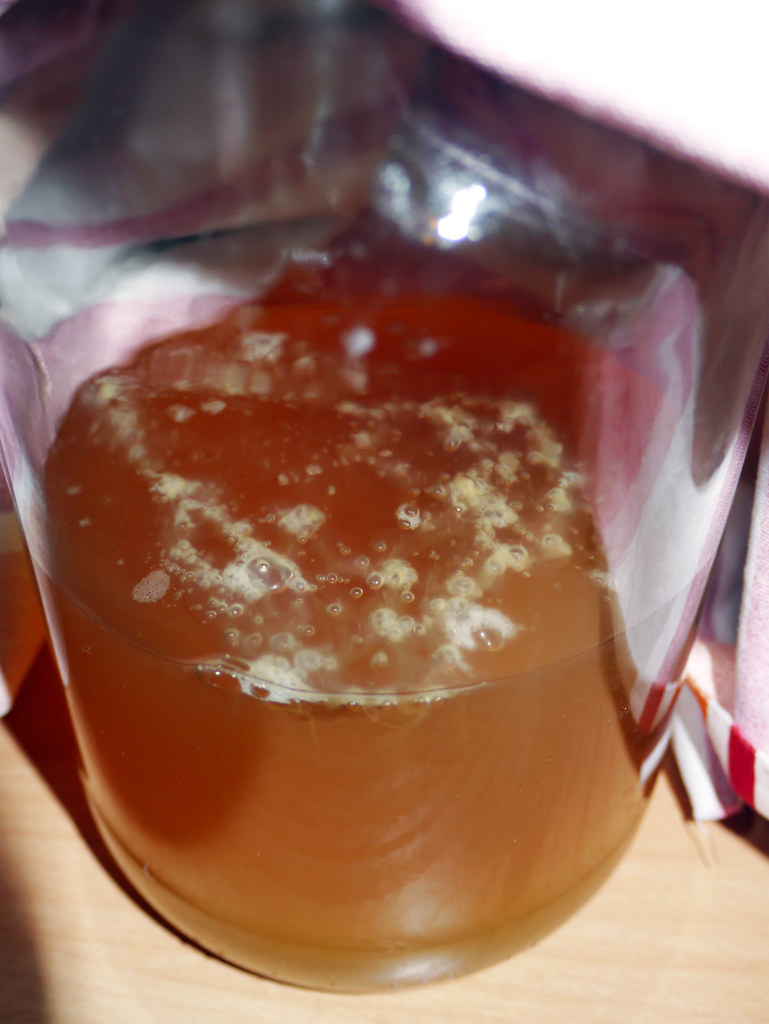
Kombucha SCOBY #2
Date Taken: 02/09/14, 4:59 PM (3 days old)
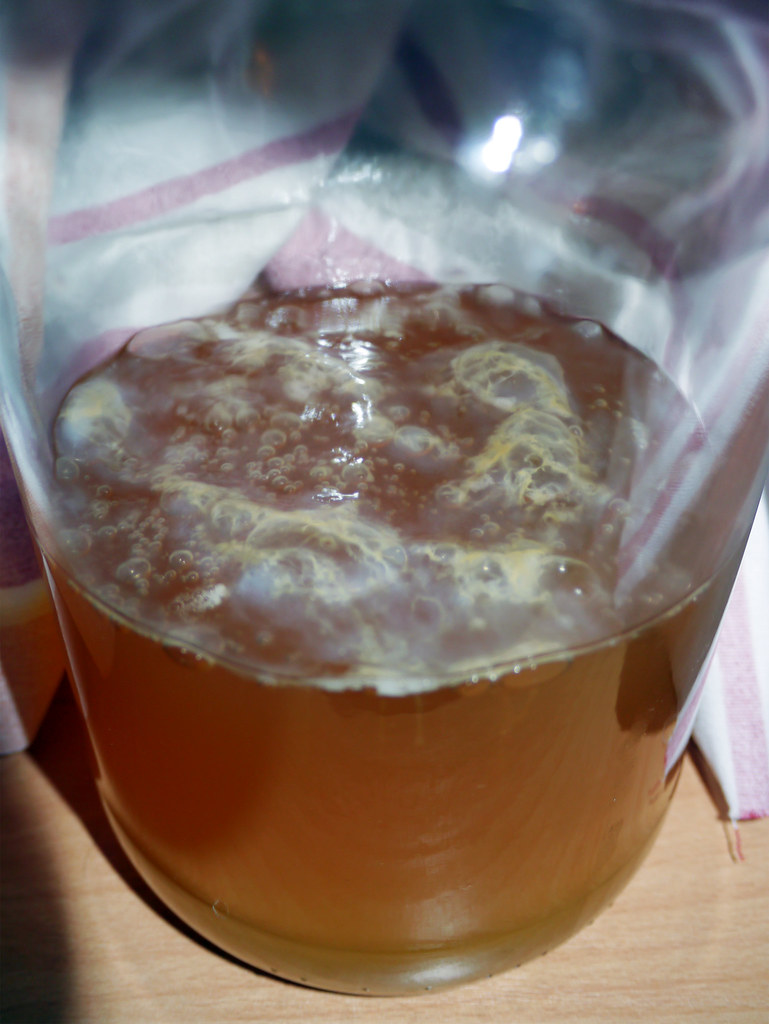
Kombucha SCOBY #3
Date Taken: 04/09/14, 4:36 PM (5 days old)
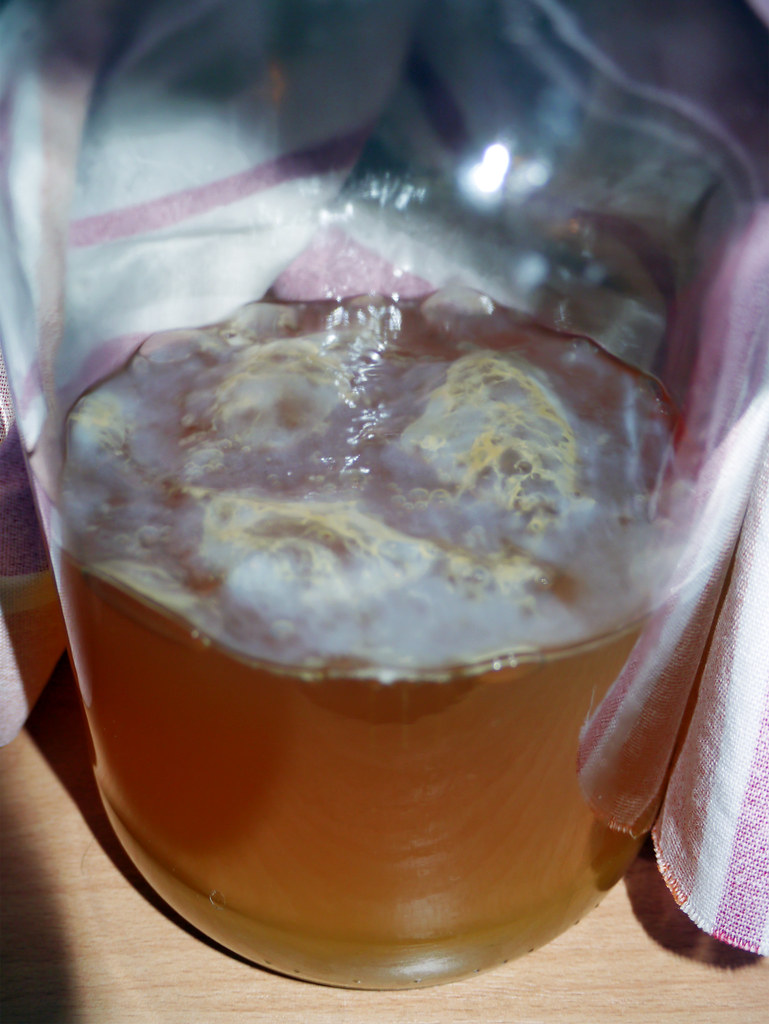
Kombucha SCOBY #4
Date Taken: 05/09/14, 2:27 AM (6 days old)
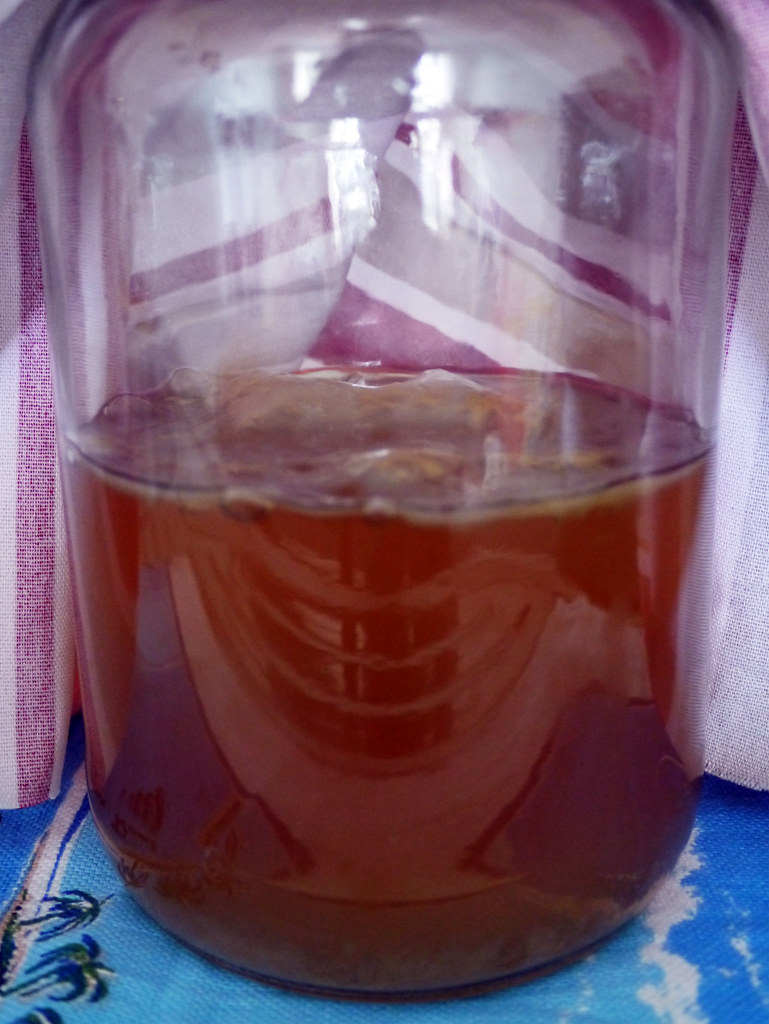
Kombucha SCOBY #5
Date Taken: 05/09/14, 2:08 PM (6 days old)
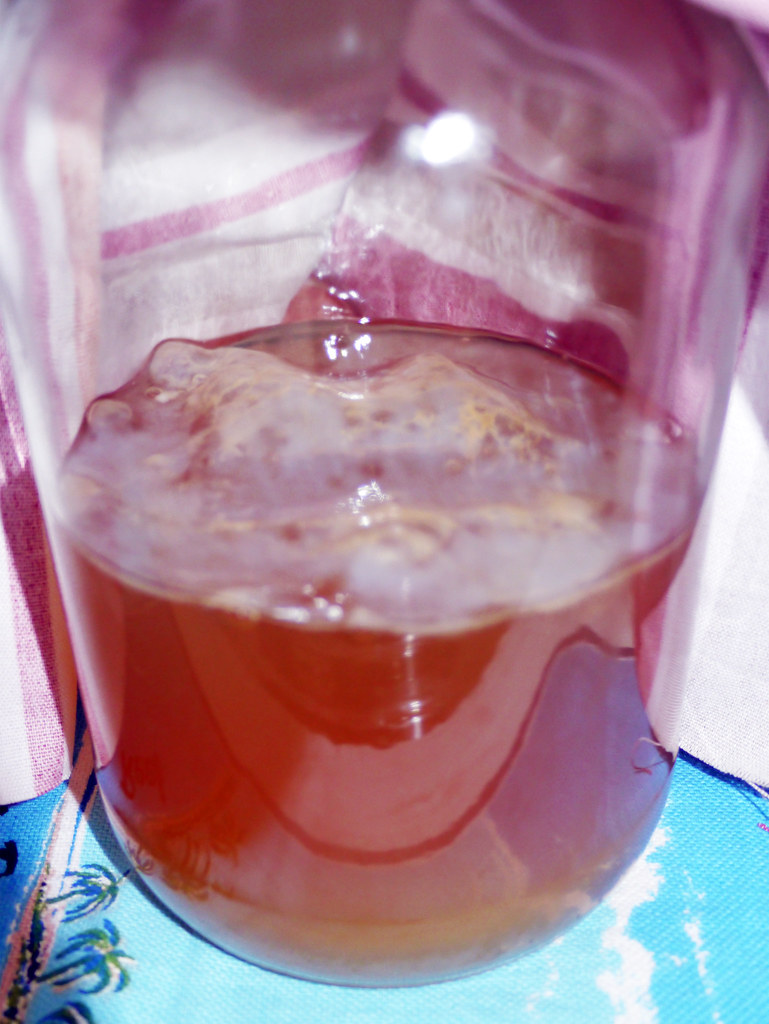
Kombucha SCOBY #6
Date Taken: 05/09/14, 2:09 PM (6 days old)
That’s it folks! Thanks for reading, following, commenting and just being a great supporter of Padaek. I will be continuing this pickling and lacto-fermenting saga with a sauerkraut recipe on the weekend so be sure to pop in and say hello then. Until then, take care of yourselves.
Notes:
- As you’ve guessed, the word for grandma in Lao is ‘mair tao’ and grandpa is ‘por tao’. And the word for mum is ____ and dad is ___? You got it! ↩
- Alternative time units: 20,995,200 seconds; 349,920 minutes; 5832 hours; 243 days; 34 weeks (rounded down). Have you seen/used the Date Duration Calculator: Days between two dates before? Very handy to find out how many days you have left until Christmas, etc. ↩
- Astronomically, spring starts on or around September 21 (the date varies by a day or so each year). This is known as the spring (vernal) equinox, and it heralds the day when the southern hemisphere receives more sun than the northern hemisphere. Reference: http://www.news.com.au/technology/environment/its-not-spring-yet-so-please-stop-flouncing-about-like-a-newborn-lamb-thank-you/story-e6frflp0-1227043811705. This year, the spring equinox in the southern hemisphere (Australia, New Zealand, South America, Southern Africa) is on Tuesday, 23 September 2014 at 12:29 PM AEST. Reference: http://www.timeanddate.com/calendar/september-equinox.html. ↩
- My partner also enjoyed the flavours of both the kvass and pickled beetroot slices a lot. ↩